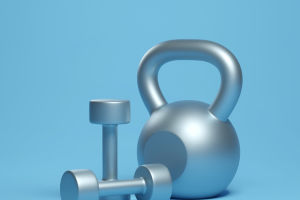Engaging in ball games is a popular way to stay active, foster teamwork, and enjoy recreational fun.
Whether it's soccer, basketball, volleyball, or tennis, these activities are known for their ability to burn calories and keep players in peak physical condition!
The dynamic movements, quick decision-making, and sustained physical effort required in ball games make them one of the most energy-intensive forms of exercise. The physical demands of ball games vary depending on the type of sport, but all involve a combination of aerobic and anaerobic activities. For instance, soccer players constantly alternate between jogging, sprinting, and walking during a game.
This pattern engages multiple muscle groups and significantly boosts calorie expenditure. Similarly, basketball players need to sprint, jump, and change direction quickly, which keeps their heart rates elevated for long periods.
On average, playing soccer for an hour can burn between 500 to 700 calories, while basketball can burn 600 to 900 calories. These figures demonstrate how ball games provide a comprehensive workout that promotes cardiovascular health and aids in weight management.
Ball games require the activation of various muscle groups, which contributes to the high energy expenditure. In volleyball, players use their core and leg muscles for stability, while their upper body strength comes into play during serving and spiking. Tennis, on the other hand, involves repetitive arm movements and quick lateral motions, engaging both the upper and lower body.
The continuous use of muscles also leads to increased oxygen consumption, which further amplifies energy expenditure. This makes ball games an excellent choice for those looking to improve their muscular endurance and overall fitness.
Beyond physical exertion, ball games also demand significant mental energy. Players must strategize, anticipate opponents' moves, and make split-second decisions during play. This mental engagement not only improves cognitive skills but also adds to the overall energy required to excel in the game.
Sports like baseball and cricket require players to remain mentally alert for extended periods, while games like basketball and soccer challenge players to make quick decisions in high-pressure situations. The combination of physical and mental effort creates a holistic workout that tests both body and mind.
Given the high energy output involved in ball games, proper recovery is crucial. Players need to refuel their bodies with nutrient-rich foods that replenish glycogen stores and aid muscle repair. Carbohydrates, proteins, and hydration play essential roles in ensuring athletes can maintain their performance levels and prevent fatigue.
Adequate rest is equally important to allow the body to recover and adapt to the physical demands of the sport. Overtraining can lead to energy depletion, which negatively affects performance and increases the risk of injury.
Ball games are not only entertaining but also serve as an effective way to stay active and improve overall fitness. The combination of aerobic activity, muscle engagement, and mental effort makes these sports an excellent choice for anyone looking to burn energy while enjoying the thrill of competition.
Whether beginner or professionally, ball games prove that exercise can be both challenging and fun!


